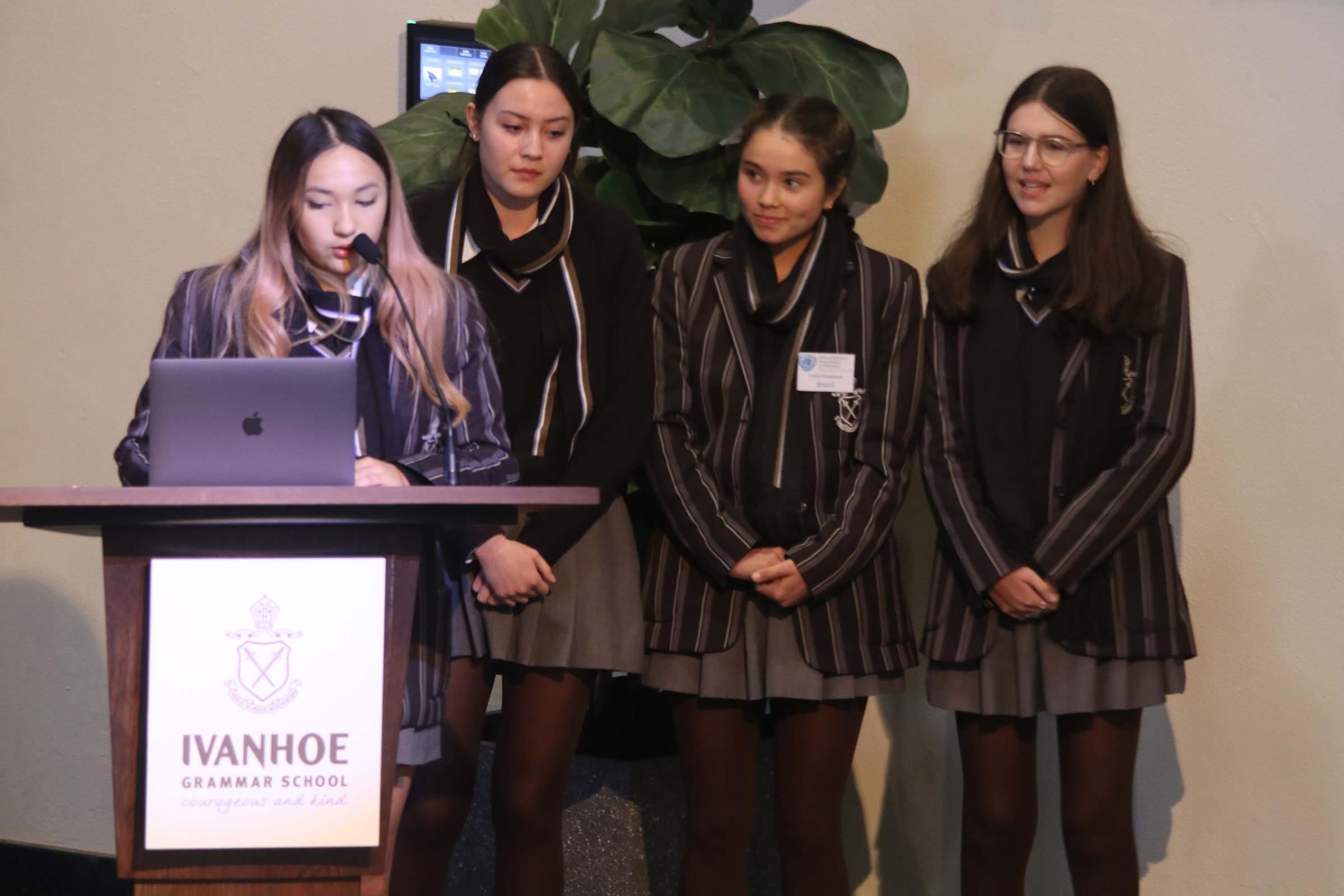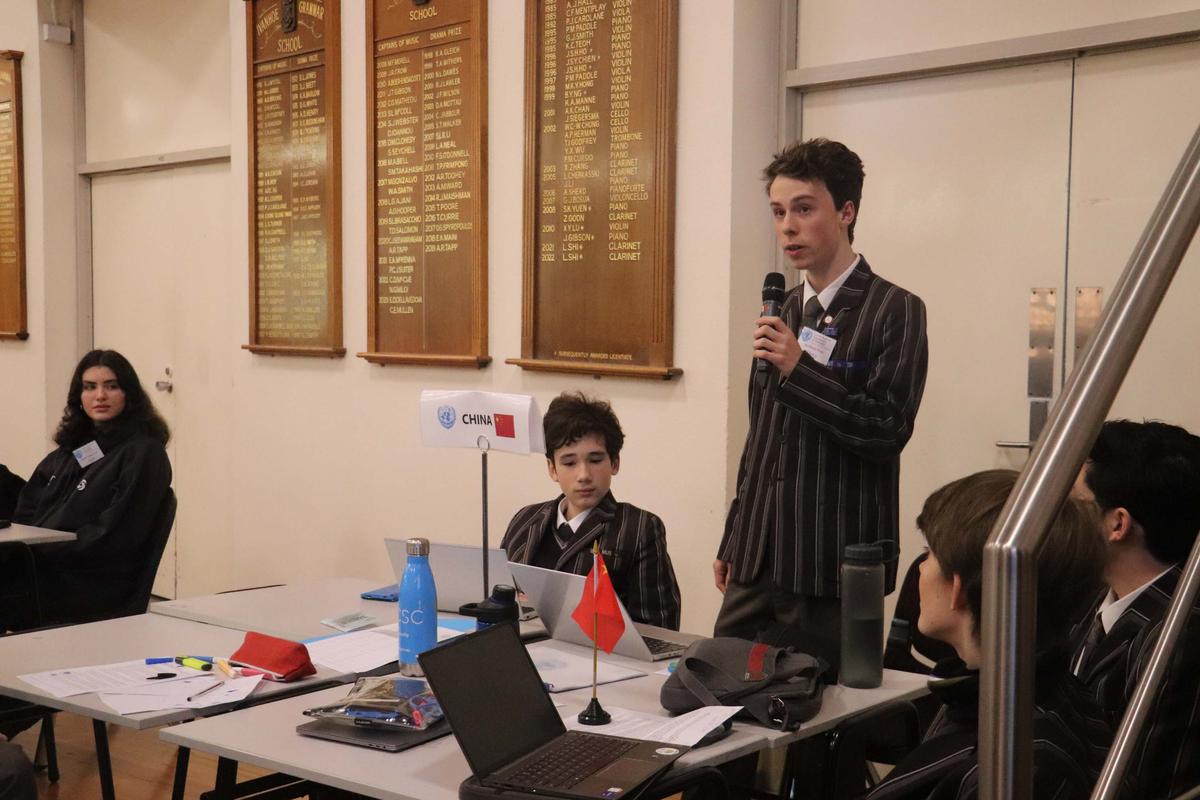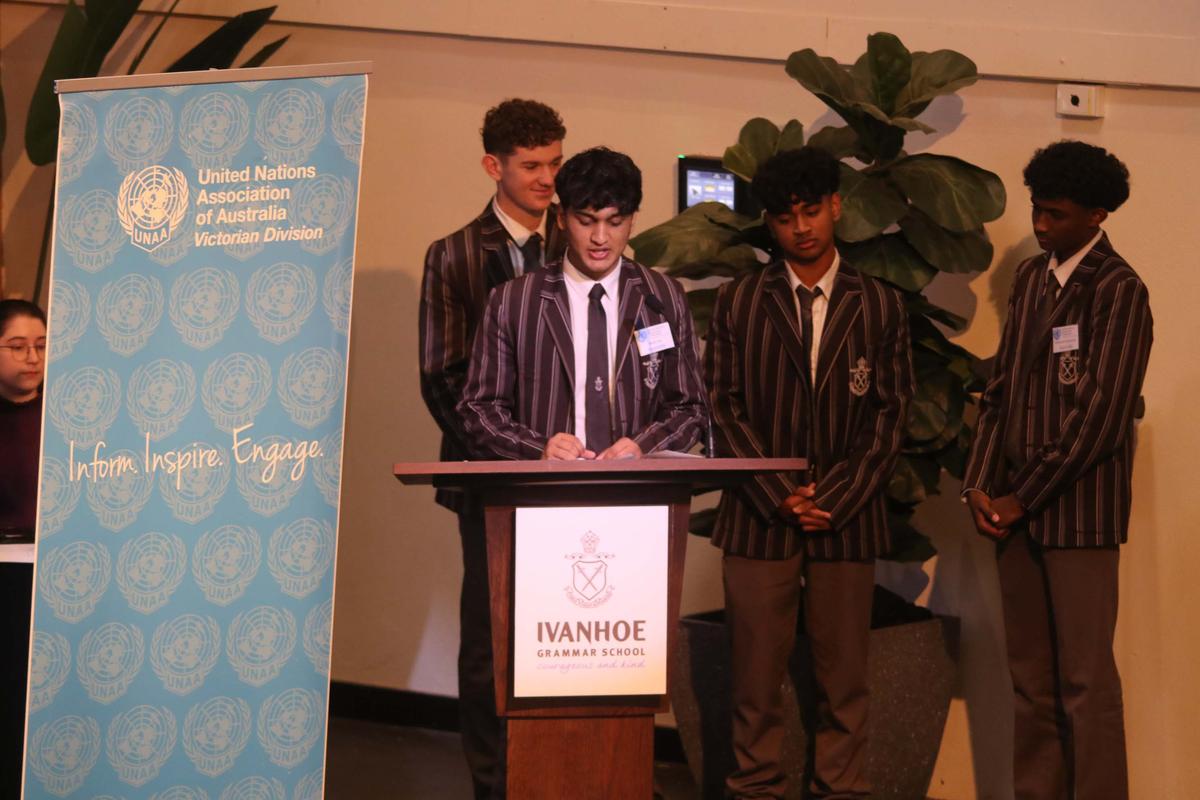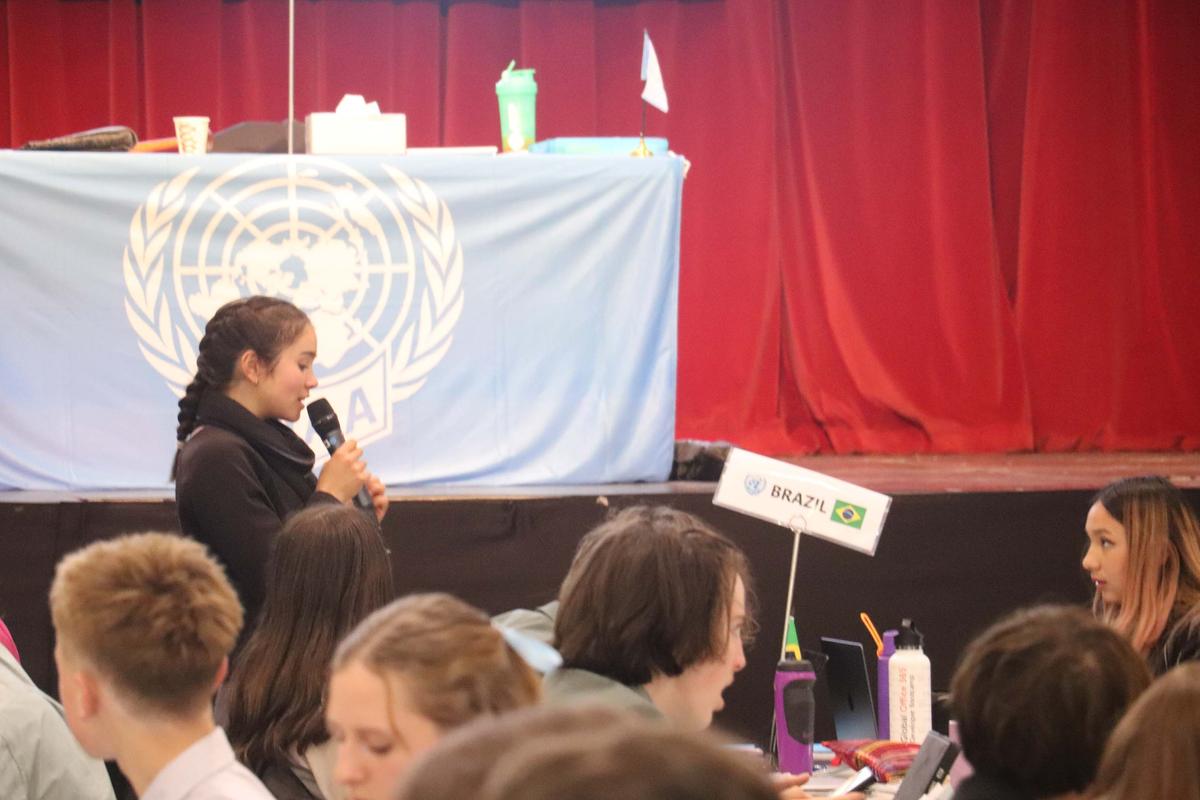Model UN

Zoe Merory, Year 11, Ridgeway Campus
This year, multiple schools' Year 11 and 12 students had the opportunity to take part in a collaborative activity called Model UN Day. The idea of the day was that teams of four people from various schools would form and they would have to represent a nation. My groups country was Peru. Everyone was instructed to research their country, and their country's position on the topic of rights of Indigenous peoples. On the day, we all started with the position statements, each country shared their initial responses to the topic, and any amendments or additions to clauses. This section took the first two hours, leading up to our recess break, where the students from other schools had the chance to explore our campus. Once the break was over, we began a two-hour moderated caucus, which is where each country raises their placard and proposes their ideas, to which other countries can counter or put in their agreement. This caucus can be requested to change to an unmoderated caucus, in which teams are able to get up, and move around the room trying to get other counties as allies to their own clauses. Once this caucus was over, we had a lunch break, and returned for the final part of the day, where the Secretary General read out the different amendments, and all countries voted on whether they agreed with it. Overall, this day was such a fun experience, where we all learned so much more about our assigned country, but also about the workings of the UN, while meeting new people.
Yanan Sun, Year 10, Plenty Campus
In an era where artificial intelligence has become a fundamental component of global progress, the challenges associated with its rapid advancement have raised pressing concerns for human rights and sustainable development. As a global forum for discussions, the United Nations General Assembly (UNGA) can bring together member states to discourse and develop frameworks that ensure the responsible development and use of AI. Furthermore, the UNGA can support initiatives that integrate AI into achieving the United Nations Sustainable Development Goals, ensuring that AI contributes positively to global development efforts.
Recently, the Year 10s had the chance to participate in such an experience, which offered a unique opportunity to step into the shoes of global leaders and engage in complex negotiations. The Year 10 topic in humanities was Human Rights and they spent their humanities classes in groups, working together to research extensively about the country they are given. This knowledge and research was presented during the Model UN simulation and further stimulated the act.
We began the day with each country’s position statement, where our fellow delegates presented their position on Artificial Intelligence, Sustainable Development and Human Rights. The groups presented in alphabetical order and had 2.5 minutes to deliver their speech, once overtime, a bell will continuously ring, signally the end. This section of Model UN allowed the year 10’s to navigate which countries were friend or foe based on the country’s position statement and approach to AI. This was an indelible section of this simulation as it challenged every student to get up on the stage and public speak, which can be quite daunting, but every student overcame the fear and simulated a proper, authentic position statement session.
After recess break, the ‘delegates’ all rejoined ready for session two, which was ‘The Caucus’. This session meant for students to come together and debate an issue. This session gives students the opportunity to discuss and debate specific aspects of this topic ‘Human Rights and AI’, and any proposed amendments they wish to put forward to the clauses of the Draft Resolution. The Secretary-General began the session in a Moderated Caucus, where the General Assembly is in a formal, moderated debate, if delegates wish to propose an idea, they must raise their country name and only once chosen by the Secretary-General then they may speak. Then countries may request Unmoderated Caucus, where it means an informal debate where delegates are free to move around the room to approach other countries to negotiate and seek their support for their amendment(s) for the Draft Resolution. This interactive session enabled students to present their ideas (from the research they have done beforehand), and really get involved in this activity. All the year 10 students were eager to participate, especially during the Unmoderated Caucus, where some ‘delegates’ became very passionate and eager to express their ideas. This brought it to the end of session two, and students were ready for lunch.
The last session was the amendments to the Draft Resolution. During this section, proposed amendments submitted at the end of the Caucus session were debated in a formal manner and then voted on. This is similar to session three, except there is no free roaming around, and is now the fine-tuning of amendments. Students were given time to discuss with their group. The General-Secretary said 'those who vote in favour of the amendment raise their country name, then those who are not in favour raise their country name', and finally there were abstentions, where the country decides not to stand on a side. Once voting was over, the final Draft Resolution was completed, which signified the ending of this simulation.
This experience was unforgettable for the year 10 students, to participate in a real-life simulation of the Model UN built on students teamwork skills, public speaking skills and further developed student’s understanding of their humanities topic ‘Human Rights.’






